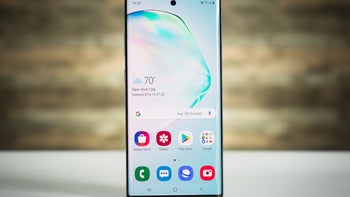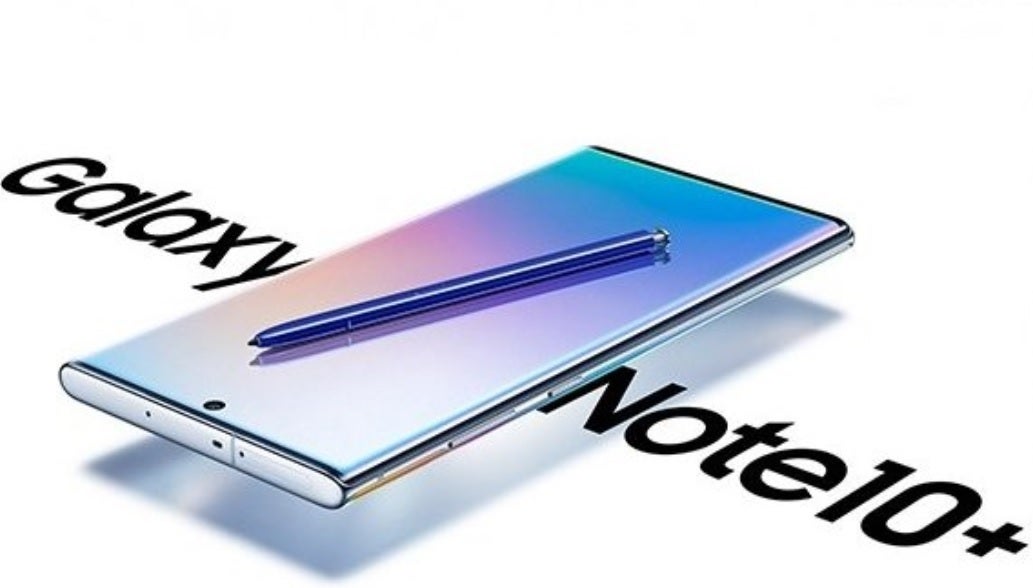Samsung releases an early warning about its fourth quarter performance

The fourth quarter of 2019 was not a good period for Samsung, according to the Wall Street Journal; the company announced on Tuesday that it expects to report a 34% drop in operating profit year-over-year. That works out to an operating profit of 7.1 trillion Korean won for the three months from October through December, equivalent to $6.1 billion USD. During the 2018 fourth quarter, Samsung reported operating profits of 10.8 trillion won ($9.2 billion USD). The forecast still managed to top expectations of analysts surveyed by S&P Global Market Intelligence. Their consensus estimate came to 6.5 trillion won. Full results will be announced later this month.
The main reason for the decline was sagging chip sales; the company is the largest supplier of memory chips in the world. Some experts expect a turnaround in this unit to begin this year. One of those analysts is Lee Seung-woo who works for Eugene Investment & Securities. Lee called the fourth quarter the "low point" for Sammy's chip business noting that the company's inventory of memory chips is declining. Still, the U.S.-China trade war, which is a factor in the firm's declining chip sales, remains a factor. Last year, sales of chips made up 75% of Samsung's operating profits displaying how important this business is to the company.
High-end Samsung phones sold well in the fourth quarter, low-end models not so much
Besides weak chip sales, lower prices for display-panels also negatively impacted the company's Q4 results. Samsung does supply chips and displays to some of its rivals including Apple.
As far as smartphones were concerned, for the year Samsung remained the global leader in shipments of the device followed by Huawei and Apple. Sales of high-end handsets were said to be strong during the quarter although the manufacturer experienced weak sales in lower-priced models. In 2019, 6.7 million 5G Galaxy smartphones were sold worldwide giving the manufacturer a better than 50% share of the nascent 5G market. That figure also topped the 4 million 5G phones Sammy had expected to ring up in 2019. Still, these phones made up a small percentage of the more than 300 million handsets delivered by the firm for the entire year. But Samsung should benefit in 2020 from the expanding rollout of 5G networks in the U.S. and other countries.

High-end phones like the Samsung Galaxy Note 10+ sold well in Q4
On February 11th, Samsung will unveil its next flagship line powered by the Snapdragon 865 Mobile Platform everywhere but Europe. In that continent, the phones will be driven by Samsung's own Exynos 990 SoC. The Samsung Galaxy S20 (6.2-inch), Galaxy S20+ (6.7-inch) and Galaxy S20 Ultra (6.9-inch) will be trotted out with displays that refresh at a rate of 120Hz. A 108MP camera sensor will be employed on the back and a Time of Flight sensor will be added to the Galaxy S20 Ultra. The latter will also feature a periscope zoom camera that will help deliver 5x optical zoom. The model will also offer 50x hybrid zoom and 100x digital zoom for a feature called "Space Zoom." All three models will support 5G in the U.S.
On the same date, Samsung will also introduce its next foldable phone. The sequel to the Galaxy Fold will open and close around the horizontal axis like the Motorola razr. According to the latest rumors, this is not the Galaxy Fold 2 which will launch in August. Instead, this unnamed model will be priced at about half the $1,500 cost of the razr but will be powered by the Snapdragon 855 Mobile Platform instead of Qualcomm's new flagship chipset. It also won't support 5G, nor will it employ the ultra-thin glass that apparently will be used on the Galaxy Fold 2 later this year.
Investors seemed to take Samsung's fourth quarter forecast in stride. In trading on the Korean Stock Exchange, Samsung's shares closed for the day at 56,800 won each ($48.56 USD), up 1.8%. The company is worth the equivalent of $322 billion USD at this price.










Things that are NOT allowed: